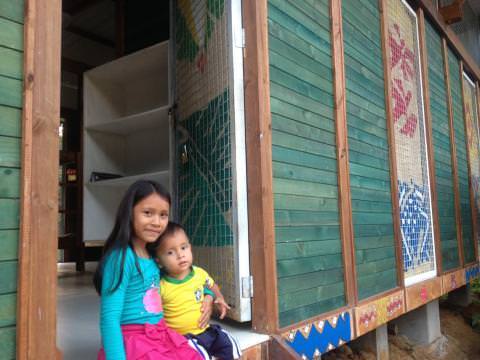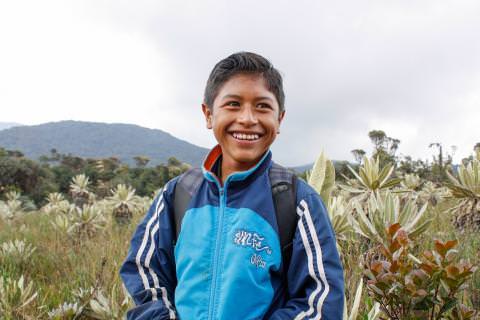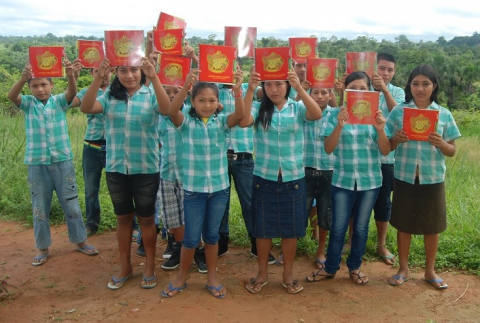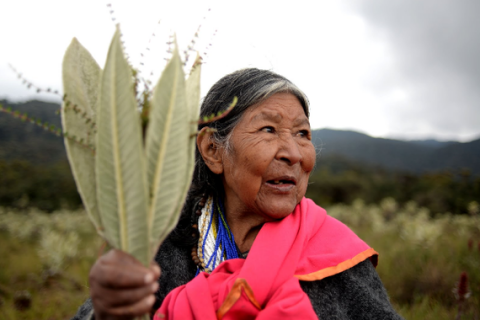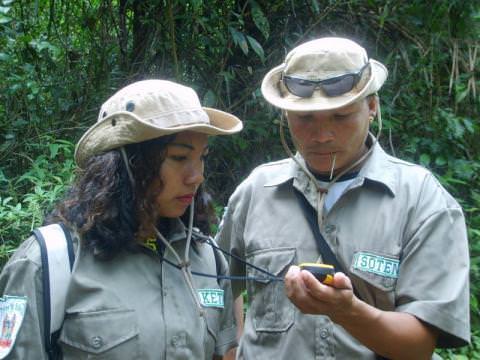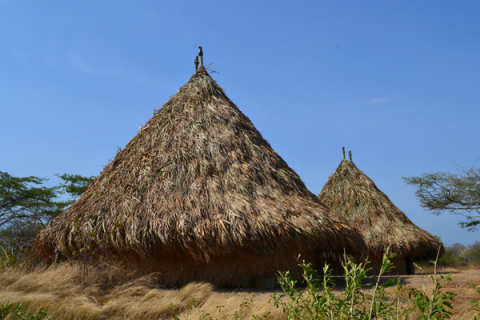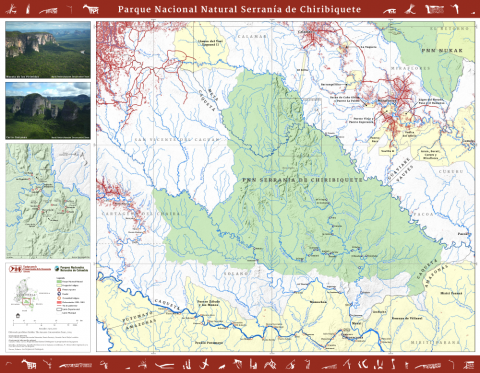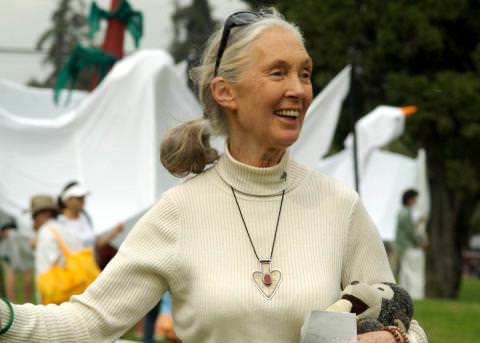Posts by Amazon Conservation Team
Yachaikury Prepares for a Facelift
Yachaikury—the ACT-sponsored ethnoeducation school of the Inga people—may soon be funded by the government for its master architectural plan. By improving dormitories, classrooms and bathrooms, Yachaikury will become an even better place for children to live and learn.
Read MoreIntroducing the Monthly Giving Program
This month, ACT launches its monthly giving program—a way for donors like you to provide our indigenous partners, such as Alex Miguel Botina (pictured above), with a reliable, steady source of funding for projects. Those who join will enjoy a few perks including a tour of the ACT office and a bracelet made by one…
Read MoreACT Materials to Become Educational Tools in Surinamese Primary Schools
Through generous funding from Nature’s Path and the Tico Torres Foundation, ACT created Junior Park Ranger manuals in partnership with our trained park guards. These booklets teach children about local flora and fauna, as well as basic principles of conservation.
Read MoreIn Memoriam: Daniel Matapí and Dr. Roberto Franco
On September 6, 2014, ACT lost two wonderful and beloved ACT colleagues. Daniel Matapí served as a field coordinator for our work with indigenous groups of the Colombian Amazon, particularly with groups associated with his lineage, the Matapí, Yukuna, Nonuya, and Muinane of the lower Caquetá. He was born and raised in the Amazon, spoke four languages, and was equally adept at training western scientists, negotiating with tribal leaders, launching field programs, and hacking trails through the jungle. His unfailing good humor and indefatigable optimism will never be forgotten.
Read MoreA Healer's Last Journey
In Sibundoy, the ancestral territory of the Kamentsa and Inga indigenous people, both the elders and lands that sustain traditional knowledge are disappearing. To keep pace with climate change, globalization and the region’s mining development, local groups are banding together to record this information before it disappears.
Read MoreCongress of Communities Convenes Indigenous Representatives of Caquetá
Indigenous representatives of the Caquetá department are participating in the Congress of Indigenous Communities, an activity that is part of a project to strengthen the indigenous organizations of Caquetá, executed by the NGO Amazon Conservation Team (ACT).
Read MoreIndigenous Park Guard Program Expands in Suriname
ACT-trained indigenous park guards play a critical role in monitoring traditional lands, data gathering, and environmental education in South America’s most forested country. This month, 13 new recruits will begin training in the villages of Kwamalasamutu, Tepu, Apetina and Sipaliwini.
Read MoreKogi People Inaugurate New Temples
In March, ACT’s Liliana Madrigal traveled with ACT board members to Colombia’s Sierra Nevada de Santa Marta to participate in the christening of two new Kogi temples. The buildings were constructed on Jaba Tañiwashkaka, a sacred site that ACT worked to purchase in 2013 with Kogi leaders and the Colombian government. This land will now be forever protected from development.
Read MoreACT Completes Detailed Map of Chiribiquete National Park
ACT cartographer Brian Hettler has spent over a year collecting all available information on the spactacular Chiribiquete national park. Starting with the initial map begun by Harvard explorer Hamilton Rice in 1907, Hettler has pored over Google Earth images, aerial photographs, and dusty maps in the Library of Congress, and has compiled the most detailed map of Chiribiquete yet assembled.
Read MoreTechnology Can Help Save the Environment
It is hard for me to believe that I will have lived on planet Earth for 80 years as of this Thursday. I was born on April 3, 1934 and the world has changed in almost all ways possible. I write this article from a laptop computer while flying in an airplane to Nebraska, where I visit every year to see the migration of the majestic Sandhill cranes…
Read More

